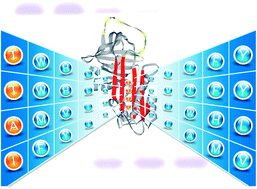Blocking formation of large protein aggregates by small peptides
Abstract
Abnormal

* Corresponding authors
a
Torrey Pines Institute for Molecular Studies, 11350 SW Village Parkway, Port St. Lucie, FL 34987-2352, USA
E-mail:
ychang@tpims.org
Fax: +1 772 345 3649
Tel: +1 772 345 4800
b
Department of Chemistry and Biochemistry, National Chung Cheng University, 168 University Road, Minhsiung, Taiwan, ROC
E-mail:
cheyhc@ccu.edu.tw
Fax: +886 5 272 1040
Tel: +886 5 242 8148
Abnormal

 Please wait while we load your content...
Something went wrong. Try again?
Please wait while we load your content...
Something went wrong. Try again?
Y. Chang and Y. Chu, Chem. Commun., 2013, 49, 4591 DOI: 10.1039/C3CC37518H
To request permission to reproduce material from this article, please go to the Copyright Clearance Center request page.
If you are an author contributing to an RSC publication, you do not need to request permission provided correct acknowledgement is given.
If you are the author of this article, you do not need to request permission to reproduce figures and diagrams provided correct acknowledgement is given. If you want to reproduce the whole article in a third-party publication (excluding your thesis/dissertation for which permission is not required) please go to the Copyright Clearance Center request page.
Read more about how to correctly acknowledge RSC content.
 Fetching data from CrossRef.
Fetching data from CrossRef.
This may take some time to load.
Loading related content
